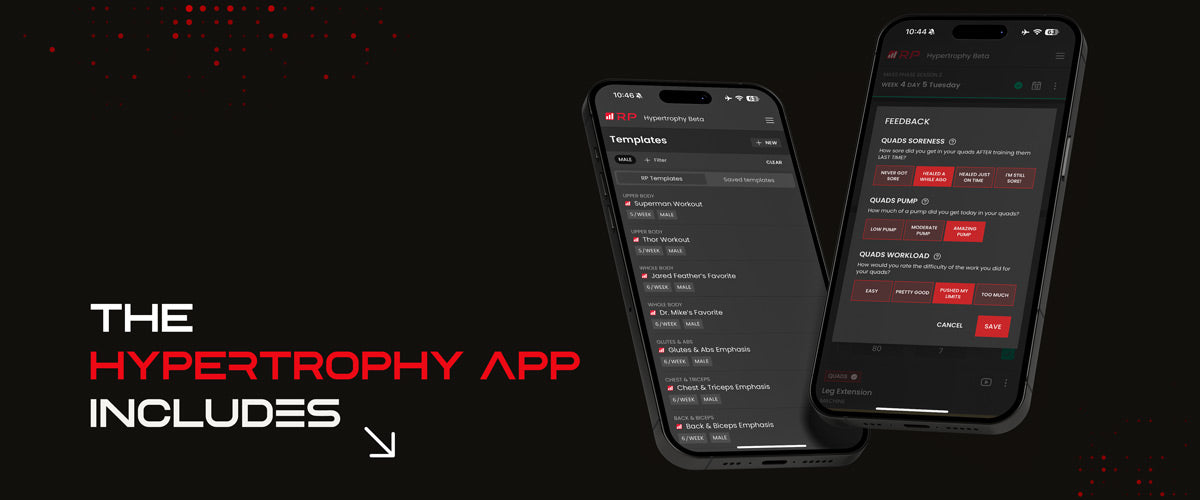What happens when one of the strongest men on the planet trades in his log press for lat prayers? World's Strongest Man champion Mitchell Hooper joined Dr. Mike Israetel for a grueling, high-volume bodybuilding workout to test his strength and endurance in a new arena. The session was not just a showcase of elite athleticism, but a deep dive into the specific training principles that drive maximum muscle growth.
The workout pushed Hooper, an athlete used to maximal effort for low reps, into the world of high-rep sets, controlled eccentrics, and the unique muscular pump that defines hypertrophy training.
TL;DR: Strongman Meets Bodybuilding
- World's Strongest Man Mitchell Hooper completed a high-volume back and shoulder workout designed by Dr. Mike for pure hypertrophy.
- The session focused on bodybuilding principles like controlled technique, mind-muscle connection, and accumulating massive volume through "myo-rep match" sets.
- Key exercises included Wide-Grip Lat Pulldowns, Lat Prayers, Chest-Supported Rows, and a high-volume shoulder finisher.
- The workout demonstrates a core principle: after establishing good technique and high intensity, training volume is the most critical factor for maximizing muscle growth.
The Philosophy: Different Goals, Different Priorities
During the workout, Dr. Mike broke down the key differences between training for strongman and training for pure bodybuilding. While both require immense effort, the priorities are different.
- For Strongman: The primary goal is performance. The hierarchy is Intensity > Technique > Feel. You must go hard and have good technique, but connecting with the specific muscle is a distant third priority.
- For Bodybuilding: The primary goal is muscle stimulus. The hierarchy starts with perfect Technique, which is non-negotiable. This is followed by a close tie between Intensity and "Feel" (mind-muscle connection), as you must push hard while ensuring the target muscle is doing the work.
The Brutal High-Volume Workout
The session was built around accumulating a massive amount of effective training volume, primarily using Dr. Mike's "myo-rep match" method. In this style, an initial all-out set is performed, and the number of reps achieved becomes the target for all subsequent sets, which can be broken into mini-sets with short rests to maintain quality.
The Volume Gauntlet: Back Training
The workout included foundational movements like Wide-Grip Lat Pulldowns and Chest-Supported Rows, but the intensity spiked with Lat Prayers (straight-arm pulldowns). After an initial set of 18 reps, Hooper was tasked with matching that rep count for three more sets, feeling the unique burn of high-volume bodybuilding.
The Humbling Finisher: High-Rep Shoulders
The session concluded with a high-volume shoulder finisher using Lying Straight-Arm Front Raises. Dr. Mike explained that this kind of extreme volume—often 25+ sets per week—was the only thing that finally moved the needle on his own shoulder development. Despite his incredible pressing strength (a 410lb strict press), Hooper was challenged by the muscular endurance required, showcasing the different demands of hypertrophy training.
A Key Cue for Hypertrophy: Athletic Up, Controlled Down
A simple but powerful cue emerged during the workout that can be applied to almost any hypertrophy exercise: be "athletic and strong on the concentric" and apply "bodybuilding control bullshit on the eccentric." This means you should lift the weight explosively and powerfully (while maintaining perfect form) and then lower it slowly and deliberately to maximize mechanical tension, which is a potent stimulus for growth.
Conclusion: The Undeniable Power of Volume
Mitchell Hooper's willingness to step outside his comfort zone and embrace a different training style provided a powerful lesson. While his world-class strength was evident, the workout highlighted that building a physique is a specific skill governed by the principles of hypertrophy. Chief among them is the undeniable importance of volume. As Dr. Mike summarized, while we all wish there were a secret, the reality is straightforward: if your recovery is in place and you want to grow, you have to do more work.
